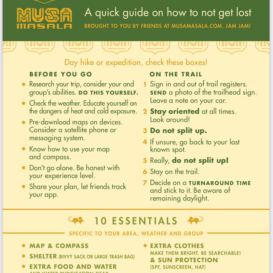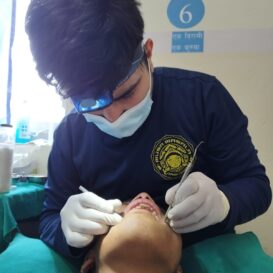For an opportunity to miss the crowds of the Everest Trek yet still get that high-altitude Himalayan experience, it’s hard to beat the Rolwaling Valley of Nepal. Complete with the stunning Dudh Pokhari Lake, you have the towering mountains and the breathtaking views (don’t forget our Altitude Tips card!) that bring people from around the world. Tatiana Havryliuk shares the secrets of this lesser known trek. We hope this gives you some idea of the variety of special places in Nepal.
Last spring I explored another beautiful part of Nepal, Rolwaling Valley. My one-week trek was stunning, culturally rich and surprisingly tranquil. Here is the lowdown.
Rolwaling is a valley that lies just west of the Khumbu (Everest) region. I took a 14-hour bus ride into the bustling Singati (950m), where I met my guide, Gomba. (We were delayed due to road construction and a bus breakdown; otherwise it should probably take around 10 hours.)

The following morning we started out on foot following a dirt road with intermittent bus, jeep and truck traffic to Chhetchhet. If you can afford the jeep, skip this part and head straight to Chhetchhet. The views were nice but the constant dusting from the speeding vehicles dampened our experience. From here our climb up many stairs began. We arrived to Simigaon (1,990m) that afternoon, ready to stretch our legs and enjoy the distant views of Gaurishankar mountain. Do not be fooled. Once you see the sign of Simigaon, you still have about 30 minutes left to climb.
The stairs were many, but of high quality. This construction project, supported by the Swiss, was in full swing during our visit. Once we arrived to Simigaon we passed a newly reconstructed school funded by a Japanese NGO. Unfortunately the Buddhist temple next to it remained in complete ruins from the 2015 earthquakes.

In Simigaon, we got our first view of Mount Gaurishankar which stands 7,135m tall at Nepali-Tibetan border and features intermittently during the trek. It has two peaks. Shankar, named after manifestation of Shiva, is the taller of the two. Guari, the shorter, more southern peak, is named after a manifestation of Shiva’s consort. Make an effort to see the mountain at sundown for a mesmerizing view.
Over the next two days we made our way through a beautiful forest loosely following the ridge along Rolwaling river. The trek was shaded with occasional hills at first descending to the river (we spent the night at the river bank in Dongang) and then steadily climbing to the alpine villages of Bedding (3,600m) and Na (4,180m). Here things felt very Khumbu-like but without the crowds.
Sherpa people live here year-round, though many descend to lower altitudes during the winter and monsoon seasons. The smell of burning juniper was in the air and prayer flags, stupas and chortens were abundant. The views were more stunning and the weather colder and more unpredictable. Clouds of all shapes and sizes moved through the landscape, adding to the charm of this place. We warmed up with the endless refills of butter tea while huddling with the locals around the kitchen furnace powered by burning yak dung.

The 2015 earthquakes damaged much of Rolwaling valley, this was still evident by the many ruins littering the scenery. However we also saw quite a few sturdy, newly painted teahouses and private homes. Under construction was the famous Bedding temple. We watched as artists worked to recreate the delicate Buddhist artwork inside.
We had two short days to explore surrounding areas without carrying heavy loads on our backs. After a lunch break at Na, Gomba and I dropped off our bags and continued through the boulder field to Dudh Pokhari (4700m), a sacred lake, located two hours uphill from Na. On the way we spotted mountain goats high up on the cliff and made our way among the yaks and nacks (the female yaks—get that right) tranquilly grazing in their natural habitat.

A storm came in just when we arrived at the lake, forcing us to hurry our visit. The brief time we were at Dudh Pokhari, it felt surreal—strikingly turquoise water, fast approaching clouds and many colorful prayers flags beating wildly in the wind.
With more cooperative weather the following day, we hiked up to Mount Yalung base camp (4800m) and the high camp above it. Once again, the stunning views did not disappoint. This time we had the luxury to sit around and soak it all in. I helped Gomba hang prayer flags, collect juniper for his family in Kathmandu (juniper grows at high altitudes in Nepal) and then we headed back down to Bedding. With more time and the right equipment, we could have continued over Tesi Lapcha La (5755m pass) making our way to Thame and the Khumbu valley. But let’s leave this adventure for my next visit to Nepal.
As always, give yourself one or two extra days to acclimatize to the altitude (find altitude tips here) and enjoy the beauty of the Himalayas, stress-free.
— Tatiana Havryliuk















Interesting blog and gorgeous photos!! Can’t wait to get hiking somewhere soon!
Come with us on the Wongchu Fundraiser in November! There are also some great treks to be found on our site. Thanks for your comment.